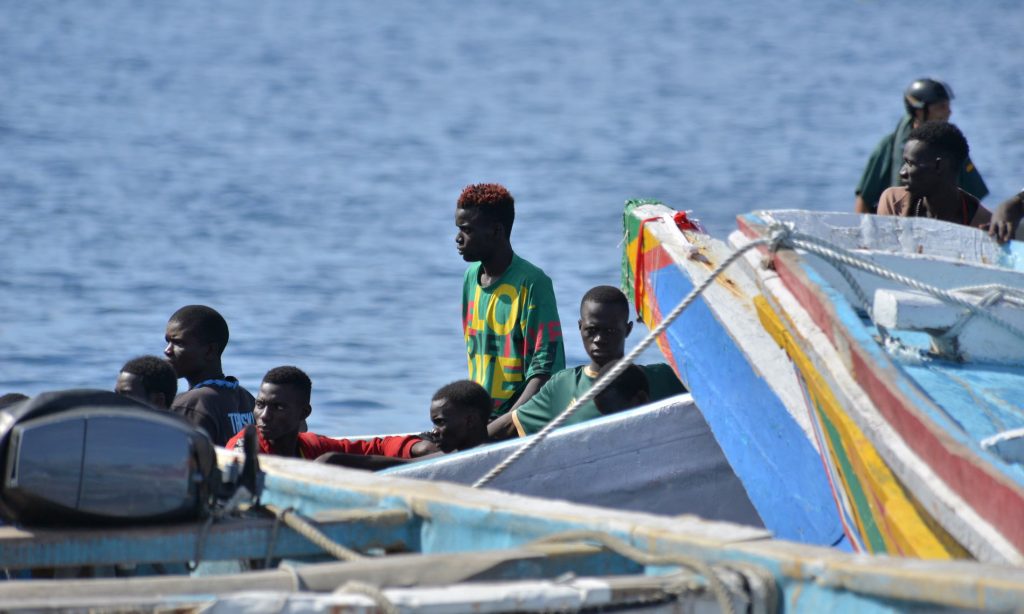After nearly three weeks of quiet at sea, Spain’s Canary Islands once again became the landing point for migrants making dangerous journeys across the Atlantic Ocean. More than 300 people arrived over the past weekend, showing that even with international agreements in place, the pressure of irregular migration remains strong in the region.
The first arrival took place on Saturday, when a wooden boat known as a cayuco managed to reach the port of La Restinga on El Hierro, one of the smallest islands in the archipelago. According to reports from the EFE news agency, the boat carried 64 men who had departed four days earlier from Nouadhibou in Mauritania, about 750 kilometers away. Emergency services confirmed that two of the men needed medical attention and were taken to the hospital. The passengers were mainly from Mali, Senegal, Mauritania, Guinea, and The Gambia.
On Sunday, Spanish rescue services were forced to intervene as more boats approached the islands. The first was spotted near Gran Canaria, carrying 21 migrants. When the vessel reached the Arguineguin dock, eight of those on board were found to have minor injuries and were treated in a local hospital.
A few hours later, the largest arrival of the weekend took place when a wooden boat carrying 235 migrants was detected near El Hierro. Authorities confirmed that the group consisted of 149 men, 64 women, and 22 minors. It remains unclear how many of the children were traveling without parents. A rescue ship, the Salvador Navia, was deployed to ensure the safety of the group, and the rescue operation lasted through the night. The last of the passengers disembarked at Las Restinga Pier on Monday morning, where they received assistance from medical professionals.
Despite agreements between Spain and governments in North and West Africa, which have helped reduce the number of successful crossings, the Canary Islands remain a critical entry point to Europe. Official figures highlight that Spain continues to face high levels of irregular migration. In 2024, the country recorded nearly 64,000 arrivals by sea and land, compared to 57,000 in 2023. Spain was the second most common destination for asylum applications in the European Union last year, after Germany.
So far in 2025, more than 25,000 arrivals have been recorded, according to UNHCR, showing a slight decrease compared to previous years. However, the route to the Canary Islands remains one of the deadliest for migrants. Earlier this year, the NGO Caminando Fronteras revealed that at least 1,865 people died in the first half of 2025 while attempting to reach the islands, including more than 300 children.
The recent weekend arrivals serve as a reminder that the migrant crisis is far from over. Local authorities in the Canary Islands continue to call for stronger support from Spain’s central government and the European Union to help manage the flow of people arriving on their shores.
Why are so many migrants risking the Canary Islands route?
Migrants often choose the Canary Islands route because it avoids the heavily guarded Mediterranean crossings. However, the journey from the coasts of Mauritania, Senegal, and other African countries is much longer and more dangerous, often leading to high numbers of deaths at sea

